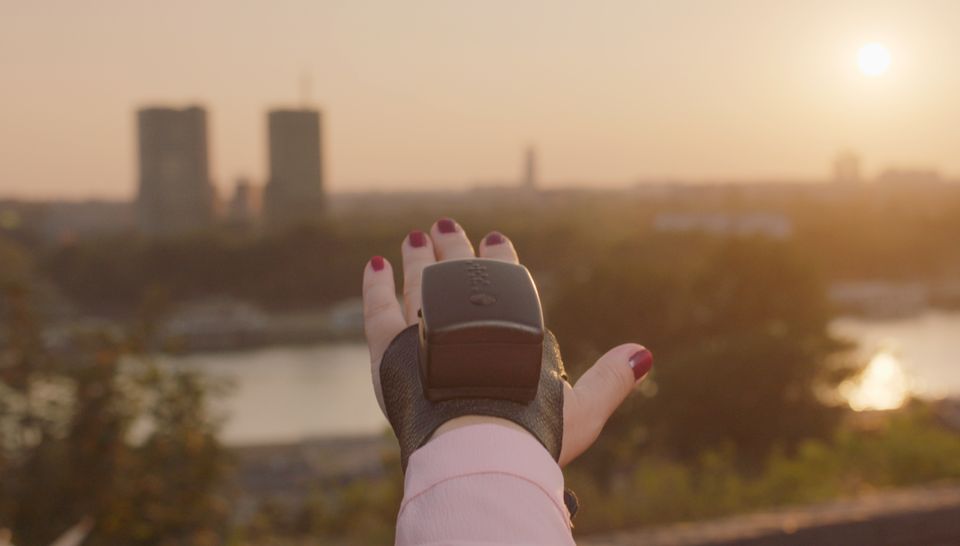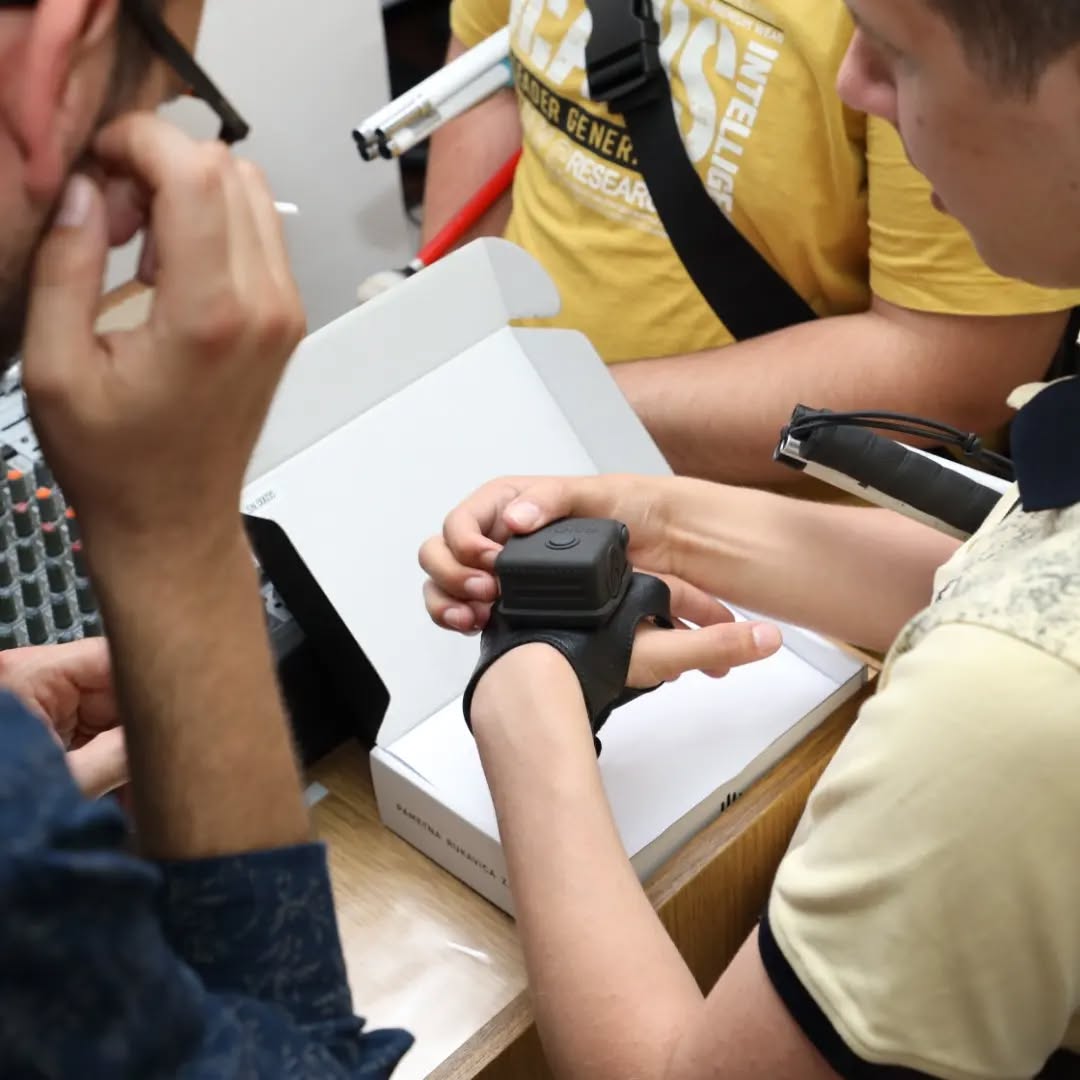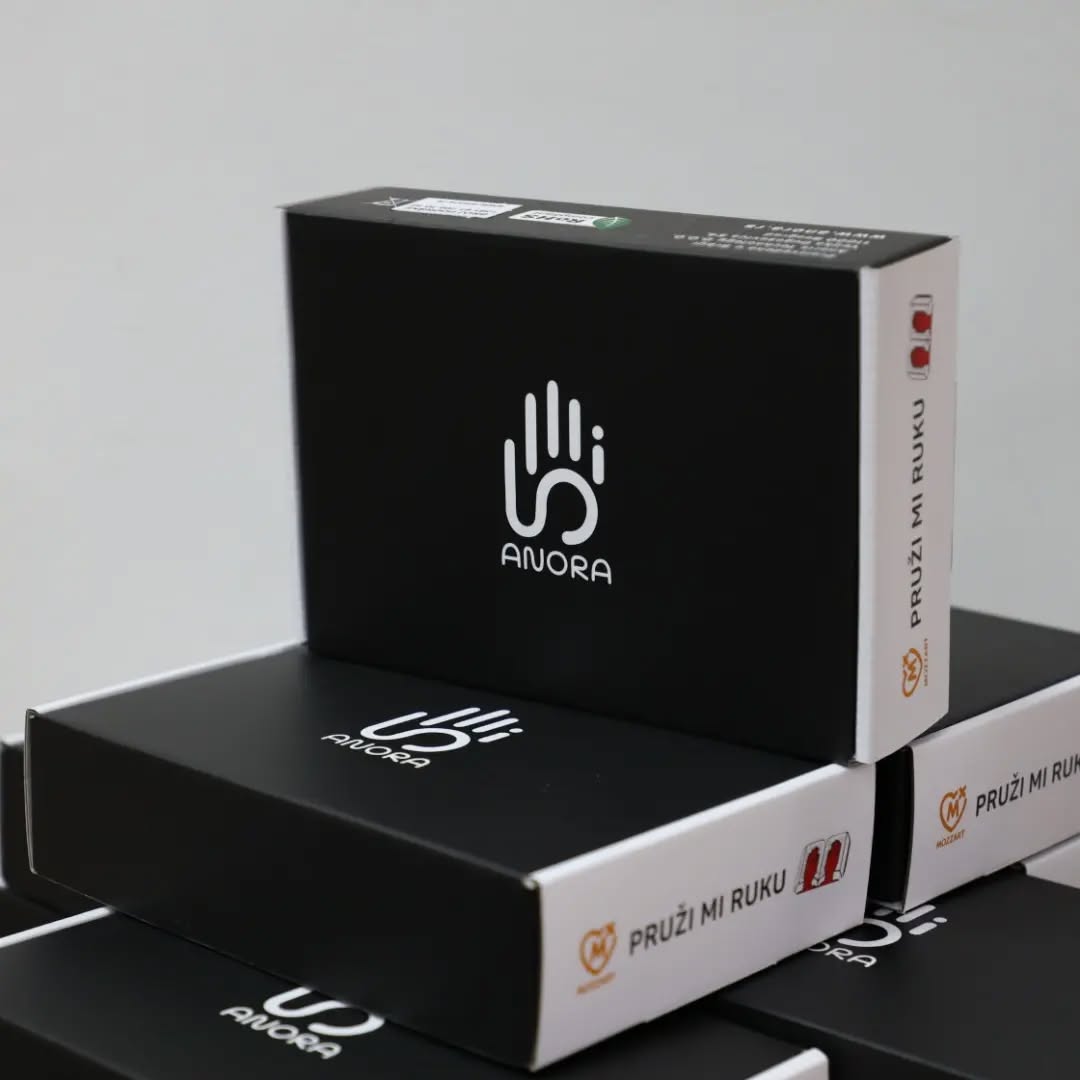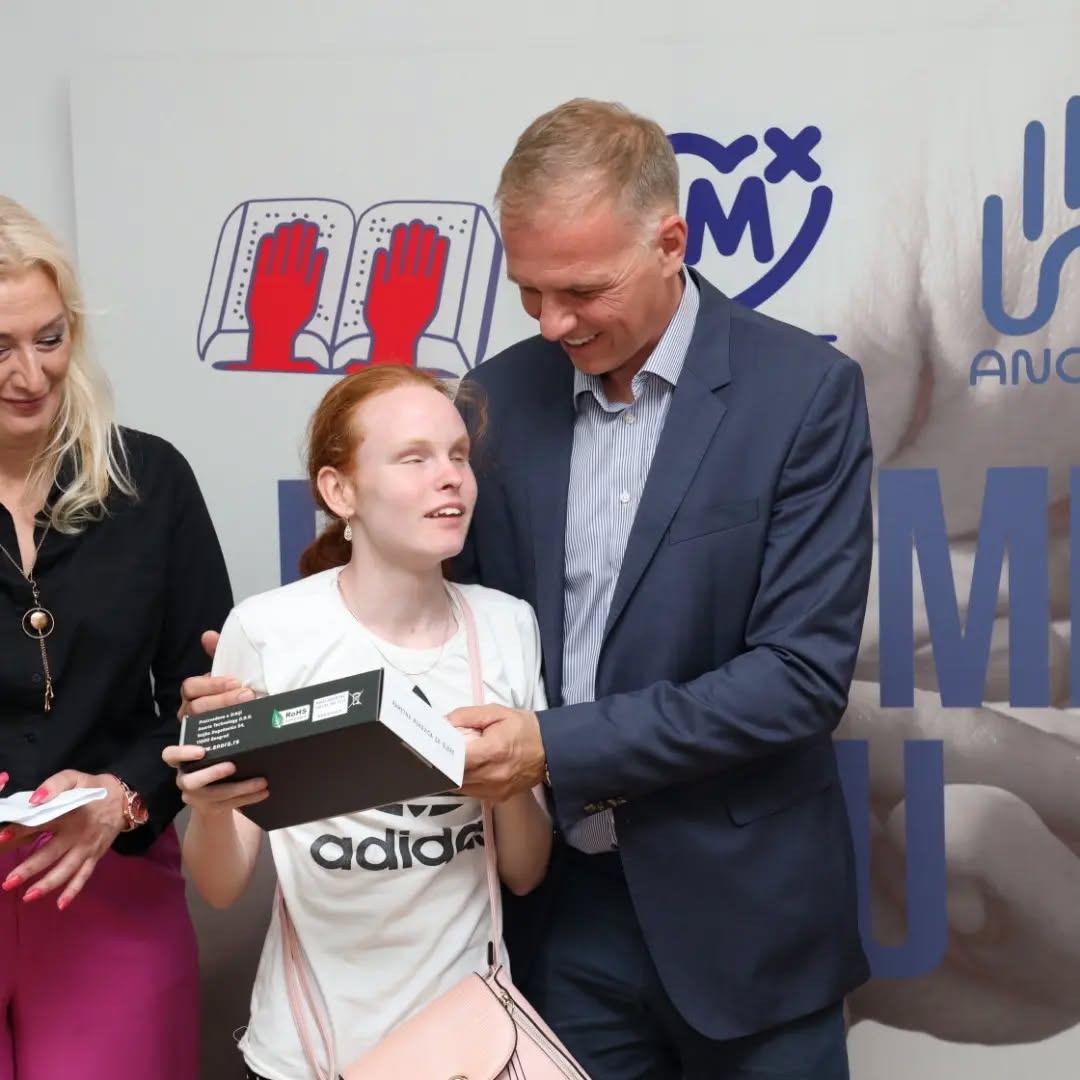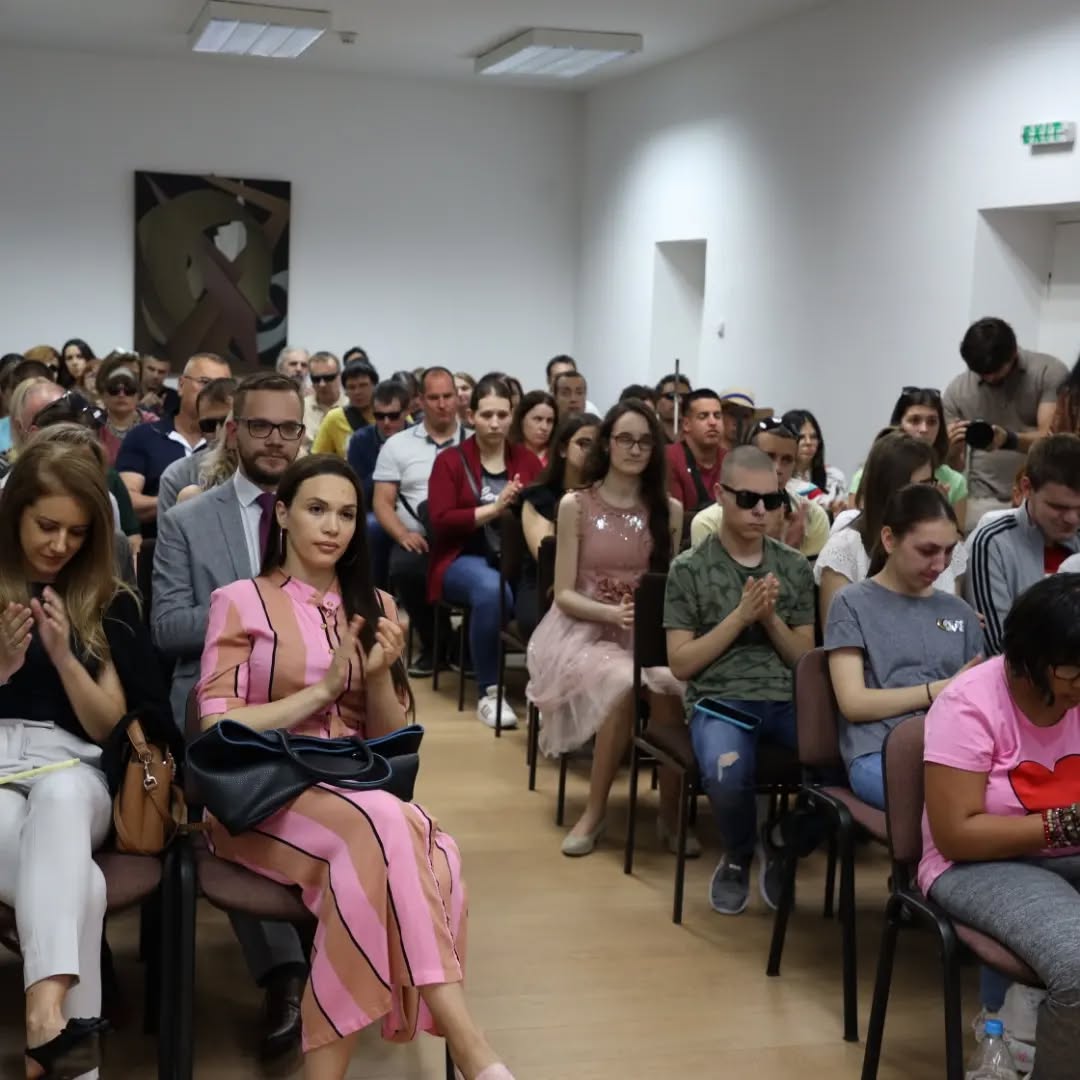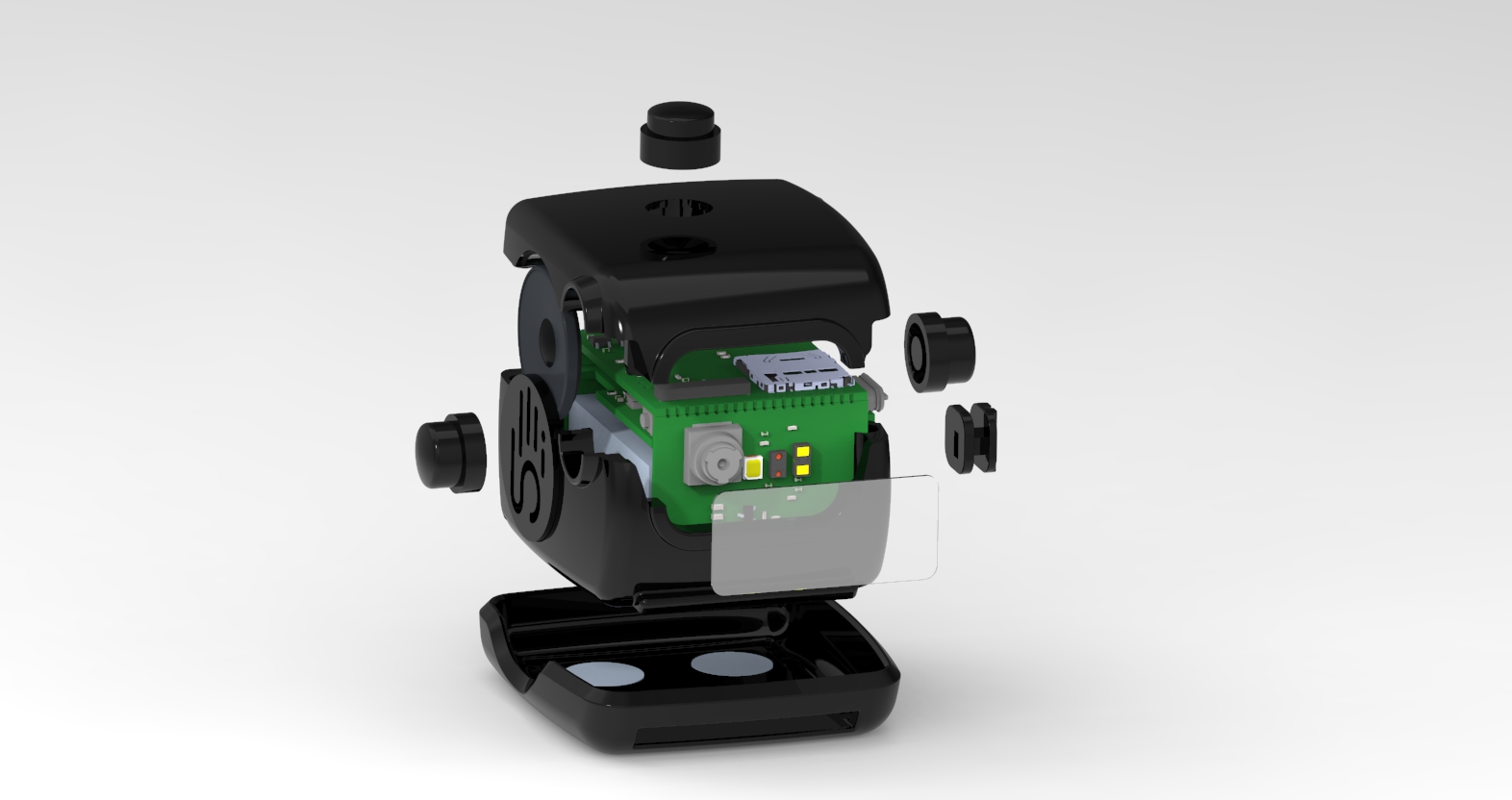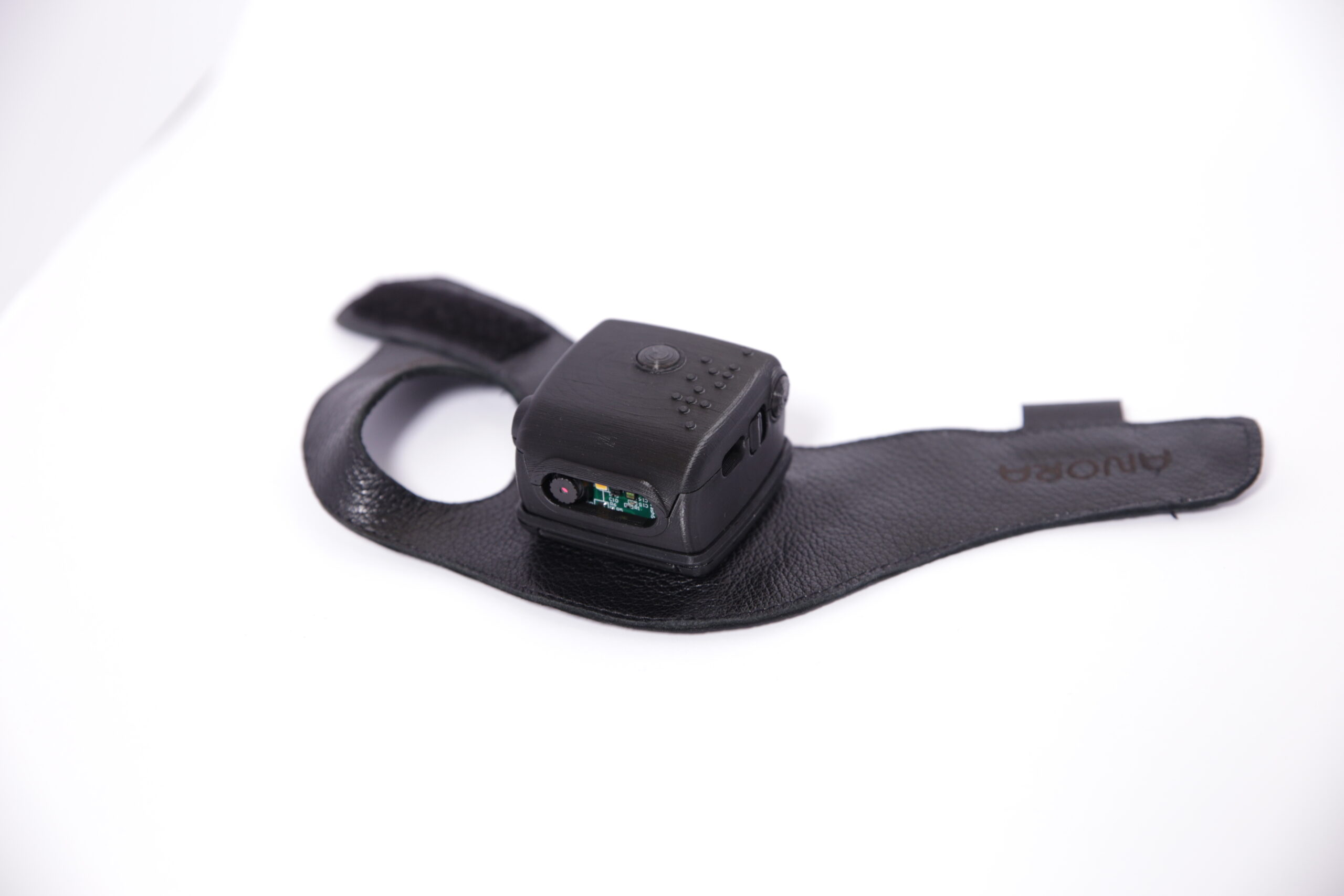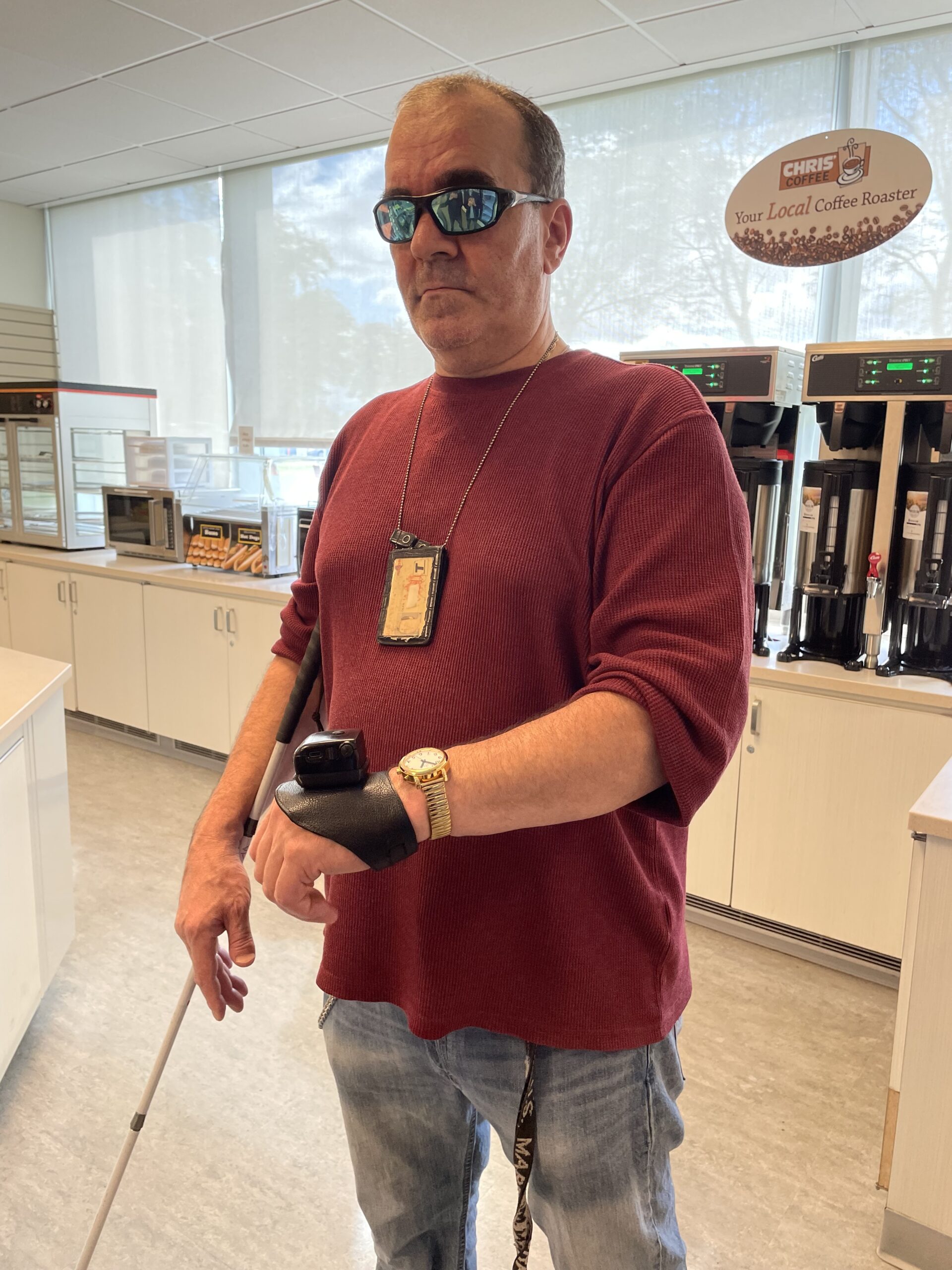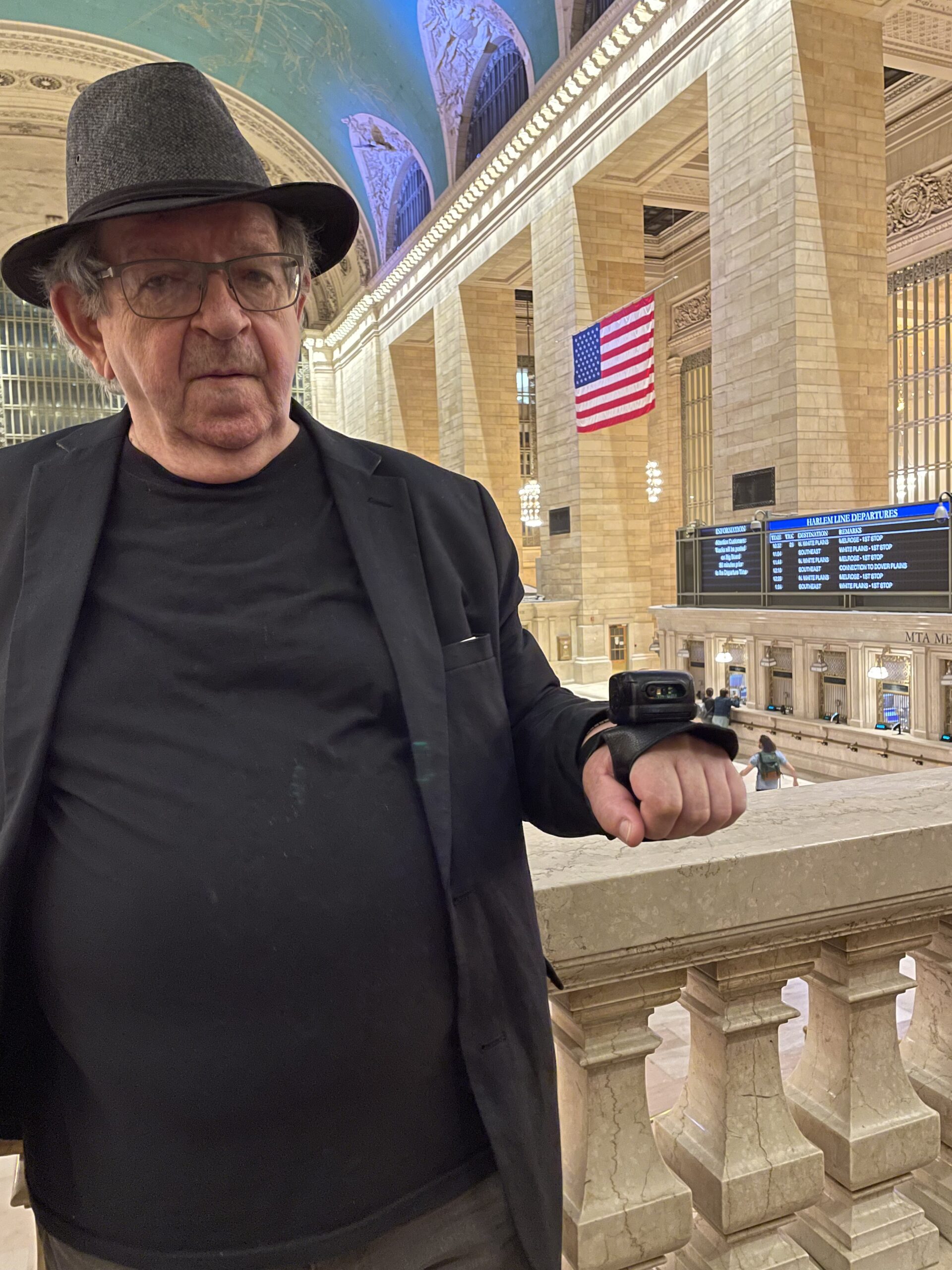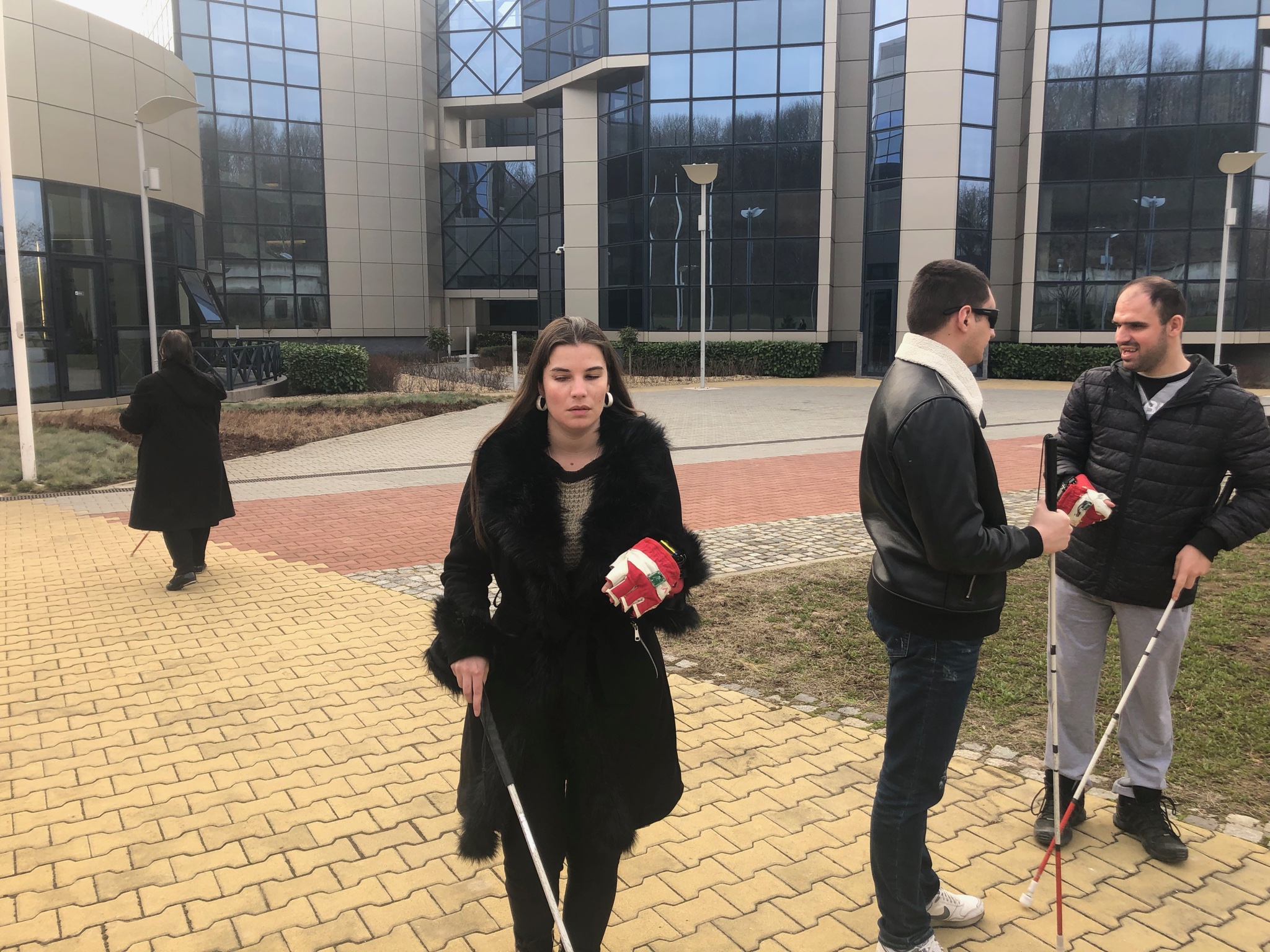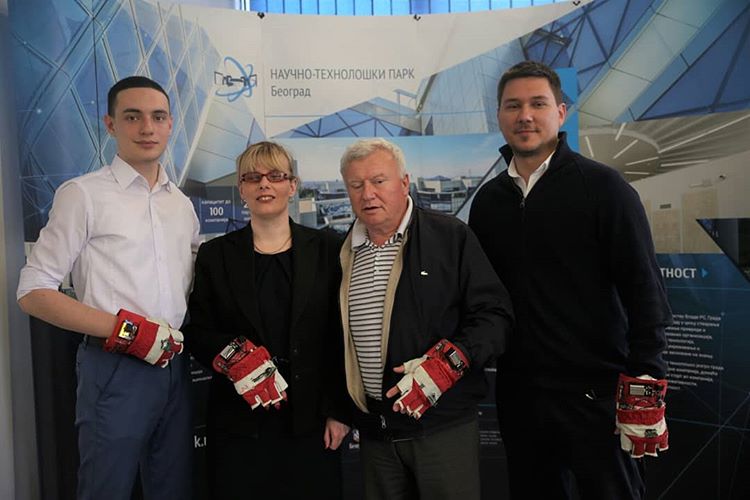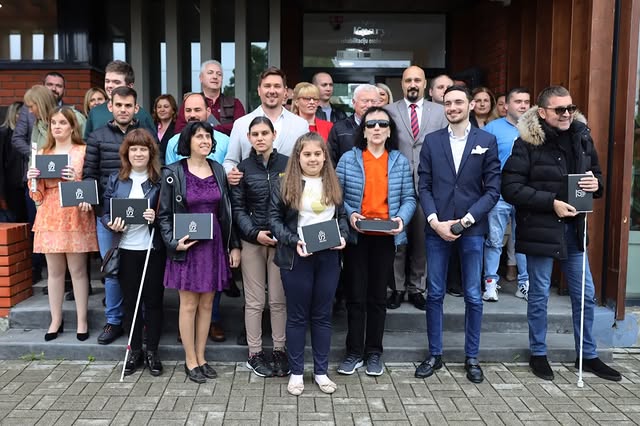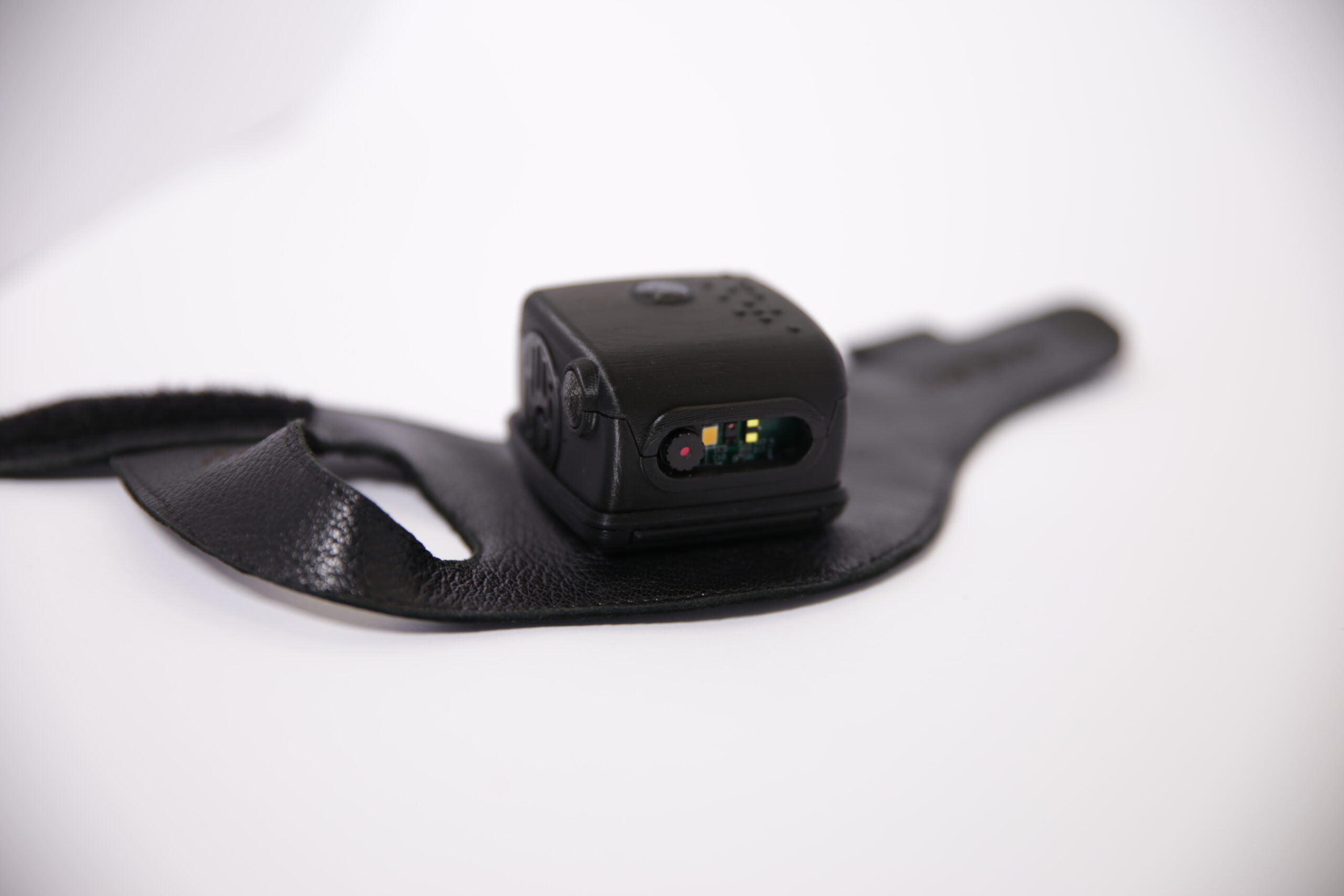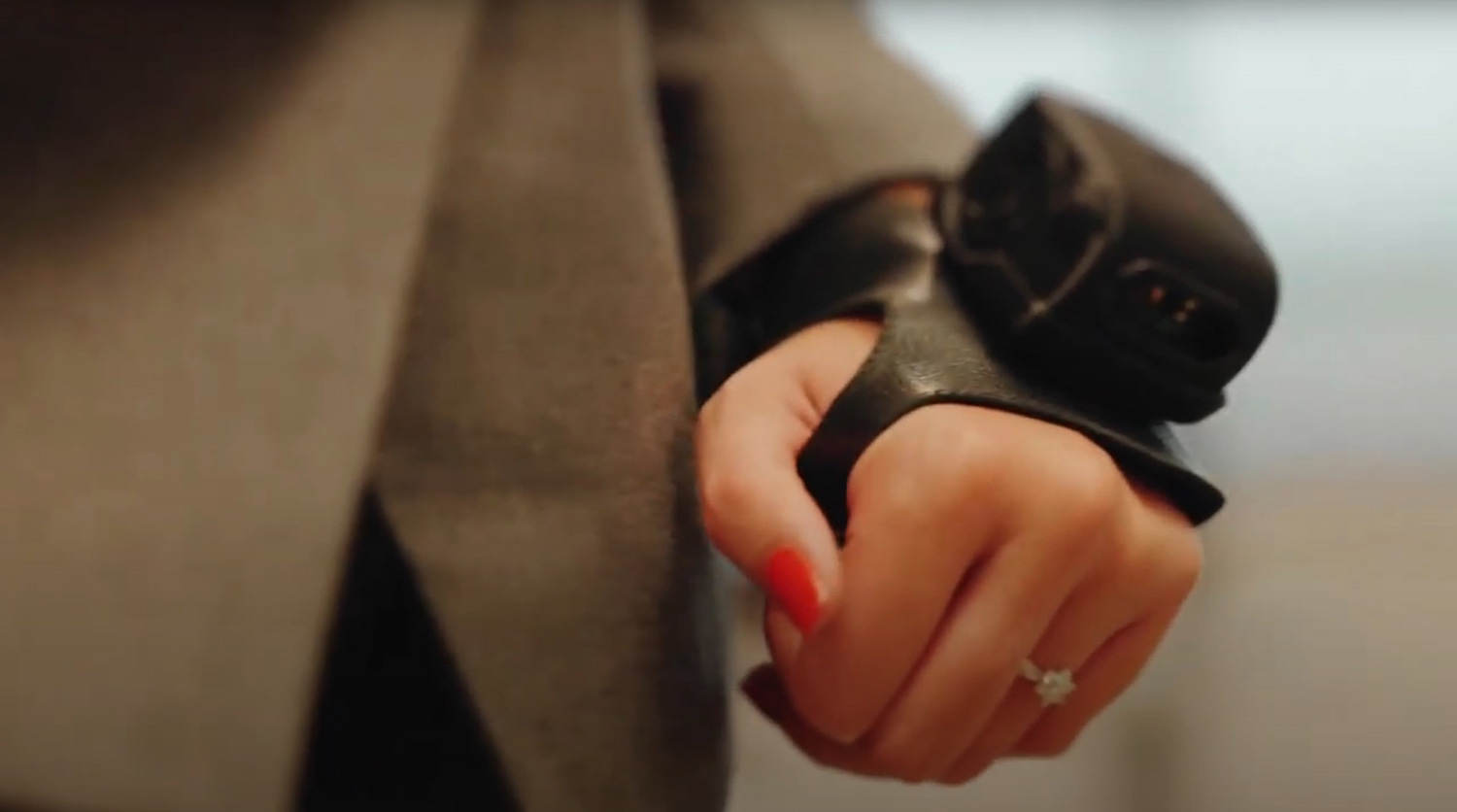Prioritising the places and people that need it the most
Anora - Smart Glove for Blind People
Anora - Smart Glove for Blind People
Anora - Smart Glove for the Blind is electronic device that helps blind do everyday much easier. With more than 10 functions it helps blind in orientation with vibration, in indoor and outdoor space, it recognises and tells colours and banknotes, vibrates and talks back for light intensity, tells time and date, and if user get lost, it has panic button to press and the device sends its location to family member, friend or professional assistant.
Serbia
National
Mainly urban
It refers to other types of transformations (soft investment)
Yes
2024-06-01
Yes
IPA : Instrument for Pre-Accession Assistance
No
No
As a representative of an organisation
The Anora Smart Glove is an innovative assistive device designed to empower blind and visually impaired individuals by combining multiple essential accessibility tools into a single, AI-powered wearable. It enhances mobility, independence, and social inclusion by providing real-time object recognition, navigation, text-to-speech conversion, facial detection, and smart haptic feedback - eliminating the need for multiple separate assistive devices.
Our primary focus is on blind and visually impaired individuals who require a seamless, efficient, and socially acceptable tool to navigate daily life. Anora also benefits caregivers, educators, rehabilitation centers, and policymakers seeking sustainable, affordable, and inclusive solutions to improve accessibility and independence.
Anora embodies the core principles of the New European Bauhaus:
Sustainability – The glove is designed with energy-efficient electronics, modular architecture for repairs, and recyclable materials, reducing waste and environmental impact.
Inclusion – Built through co-creation with blind individuals, accessibility experts, and human-centered design specialists, ensuring affordability and accessibility for all.
Aesthetics & Quality of Experience – Unlike bulky, medical-looking assistive devices, Anora features a sleek, ergonomic, and socially integrated design, enabling users to feel comfortable in any setting.
Anora directly addresses critical accessibility challenges in urban and rural environments, particularly in territories with limited infrastructure for visually impaired individuals.
Breaking Barriers to Employment & Education – By enabling independent navigation, real-time text reading, and instant environmental feedback, Anora expands opportunities for education and employment.
Enhancing Social Inclusion – AI-driven assistance reduces isolation and fosters active participation in society, benefiting both individuals and communities.
Scalability Across Regions
Our primary focus is on blind and visually impaired individuals who require a seamless, efficient, and socially acceptable tool to navigate daily life. Anora also benefits caregivers, educators, rehabilitation centers, and policymakers seeking sustainable, affordable, and inclusive solutions to improve accessibility and independence.
Anora embodies the core principles of the New European Bauhaus:
Sustainability – The glove is designed with energy-efficient electronics, modular architecture for repairs, and recyclable materials, reducing waste and environmental impact.
Inclusion – Built through co-creation with blind individuals, accessibility experts, and human-centered design specialists, ensuring affordability and accessibility for all.
Aesthetics & Quality of Experience – Unlike bulky, medical-looking assistive devices, Anora features a sleek, ergonomic, and socially integrated design, enabling users to feel comfortable in any setting.
Anora directly addresses critical accessibility challenges in urban and rural environments, particularly in territories with limited infrastructure for visually impaired individuals.
Breaking Barriers to Employment & Education – By enabling independent navigation, real-time text reading, and instant environmental feedback, Anora expands opportunities for education and employment.
Enhancing Social Inclusion – AI-driven assistance reduces isolation and fosters active participation in society, benefiting both individuals and communities.
Scalability Across Regions
Blind
Smart-device
Innovative
Independence
Accessibility
The Anora Smart Glove is designed to empower blind and visually impaired individuals by providing them with an intuitive, real-time assistive technology that enhances mobility and independence. Our project is deeply rooted in sustainability across three key dimensions: social, environmental, and economic.
Social Sustainability
Anora directly addresses the social inclusion of blind and visually impaired individuals, a group often marginalized due to accessibility barriers. By integrating AI-driven object recognition, haptic feedback, and GPS navigation into a single wearable device, Anora significantly enhances personal autonomy, reducing reliance on external assistance. This leads to greater opportunities for education, employment, and social participation.
Environmental Sustainability
The device is designed using energy-efficient components, including a low-power microchip and optimized battery consumption strategies. Our manufacturing approach prioritizes recycled and eco-friendly materials where possible, minimizing electronic waste. Additionally, by extending the device’s lifespan through modular design, we reduce the environmental impact of frequent replacements.
Economic Sustainability
Anora contributes to the global assistive technology market by offering an affordable, scalable solution that balances cost efficiency with cutting-edge functionality. By adopting a flexible production model, including potential partnerships with European manufacturers, we ensure economic viability while promoting local job creation. Moreover, the device reduces long-term healthcare costs by enabling users to navigate their surroundings safely, lowering the risk of injuries.
With its scalable production and global applicability, Anora sets a benchmark for future innovations in inclusive technology.
Social Sustainability
Anora directly addresses the social inclusion of blind and visually impaired individuals, a group often marginalized due to accessibility barriers. By integrating AI-driven object recognition, haptic feedback, and GPS navigation into a single wearable device, Anora significantly enhances personal autonomy, reducing reliance on external assistance. This leads to greater opportunities for education, employment, and social participation.
Environmental Sustainability
The device is designed using energy-efficient components, including a low-power microchip and optimized battery consumption strategies. Our manufacturing approach prioritizes recycled and eco-friendly materials where possible, minimizing electronic waste. Additionally, by extending the device’s lifespan through modular design, we reduce the environmental impact of frequent replacements.
Economic Sustainability
Anora contributes to the global assistive technology market by offering an affordable, scalable solution that balances cost efficiency with cutting-edge functionality. By adopting a flexible production model, including potential partnerships with European manufacturers, we ensure economic viability while promoting local job creation. Moreover, the device reduces long-term healthcare costs by enabling users to navigate their surroundings safely, lowering the risk of injuries.
With its scalable production and global applicability, Anora sets a benchmark for future innovations in inclusive technology.
The Anora Smart Glove is designed with a human-centered approach, prioritizing both aesthetics and user experience to ensure seamless integration into the daily lives of blind and visually impaired individuals. Our mission is to create an assistive device that is not only highly functional but also elegant, discreet, and culturally inclusive, reinforcing dignity and confidence in its users.
Aesthetic Design and Ergonomics
Anora is crafted to resemble a modern wearable accessory rather than a medical device. The glove’s sleek, minimalist design ensures that users feel comfortable wearing it in various social and professional settings without drawing unnecessary attention. We have carefully selected lightweight, breathable, and flexible materials, allowing for extended use without discomfort. The ergonomic fit ensures natural hand movement, while the integration of haptic feedback elements is done seamlessly, avoiding bulky or intrusive components.
Quality of Experience and Intuitive Interaction
Anora prioritizes a frictionless user experience, leveraging intuitive gesture controls and haptic feedback for seamless navigation. The AI-powered object recognition and real-time audio guidance provide immediate and precise information about the surroundings, reducing stress and increasing confidence in mobility. The glove’s tactile interface has been optimized for accessibility, ensuring that users can interact with the device effortlessly, even in fast-paced environments.
Cultural Relevance and Inclusivity
Recognizing the diversity of users across different cultures, Anora is designed with universal usability in mind. The language and feedback systems are adaptable, allowing customization based on regional preferences and accessibility needs. We have engaged with visually impaired communities across multiple countries to ensure that the design respects cultural sensitivities and local expectations. The device is also inclusive of various hand sizes.
Aesthetic Design and Ergonomics
Anora is crafted to resemble a modern wearable accessory rather than a medical device. The glove’s sleek, minimalist design ensures that users feel comfortable wearing it in various social and professional settings without drawing unnecessary attention. We have carefully selected lightweight, breathable, and flexible materials, allowing for extended use without discomfort. The ergonomic fit ensures natural hand movement, while the integration of haptic feedback elements is done seamlessly, avoiding bulky or intrusive components.
Quality of Experience and Intuitive Interaction
Anora prioritizes a frictionless user experience, leveraging intuitive gesture controls and haptic feedback for seamless navigation. The AI-powered object recognition and real-time audio guidance provide immediate and precise information about the surroundings, reducing stress and increasing confidence in mobility. The glove’s tactile interface has been optimized for accessibility, ensuring that users can interact with the device effortlessly, even in fast-paced environments.
Cultural Relevance and Inclusivity
Recognizing the diversity of users across different cultures, Anora is designed with universal usability in mind. The language and feedback systems are adaptable, allowing customization based on regional preferences and accessibility needs. We have engaged with visually impaired communities across multiple countries to ensure that the design respects cultural sensitivities and local expectations. The device is also inclusive of various hand sizes.
The key objective of the Anora project is to promote inclusion and independence for blind and visually impaired individuals by ensuring accessibility, affordability, and usability. Our approach is based on "Design for All" principles, making technology intuitive and useful for a broad range of users. Anora is designed with universal usability in mind, ensuring that blind and visually impaired individuals can navigate their environment independently and safely. The device features tactile buttons with different textures for easy navigation, Braille markings for key functions, voice feedback for all essential actions, and vibration-based interaction to detect obstacles and assess environmental awareness. To guarantee real-world functionality, Anora has been extensively tested in collaboration with blind organizations, ensuring that its design meets the actual needs of users across various environments. Besides accessibility, affordability is a crucial aspect of Anora’s mission. Many assistive technologies are expensive, making them inaccessible to those who need them most. To address this, Anora partners with governments and NGOs to provide the device free of charge through subsidy programs. We use cost-effective components to ensure Anora remains significantly more affordable than existing solutions, while a sustainable funding model secures long-term availability and widespread distribution. Anora also promotes inclusive governance and collaboration by integrating blind individuals directly into the product development process. Through focus groups and pilot programs, users contribute valuable insights that help refine features and usability. We work closely with local and national institutions to advocate for policy-level improvements in accessibility. By addressing accessibility, affordability, and inclusive governance, Anora stands as a blueprint for inclusive innovation, setting new standards for the future of assistive technology worldwide.
In the development of the Anora smart glove for the blind, organizations for the blind have been essential partners. From the very beginning, we understood the importance of working closely with experts and users who best understand the needs of blind individuals. Their input has been invaluable in shaping Anora into a practical and effective tool for everyday use. Our collaboration with both national and local organizations allowed us to thoroughly test the glove’s features, ergonomics, and safety. The device’s functionality was assessed in real-life situations to ensure its effectiveness. By gathering direct feedback, we continuously refined the design, improved sensor precision, and enhanced usability. Every adjustment was made to make the glove as intuitive and user-friendly as possible. A key part of this process was organizing focus groups to measure overall user satisfaction and evaluate the planned pricing. Participants provided critical insights that led to meaningful improvements, from refining the glove’s ergonomic design to incorporating additional functions that increase its usefulness in daily life. Thanks to this approach, Anora is not only a highly advanced technological product but also a well-adapted solution for its users. Beyond development, these organizations are also our main partners in ensuring Anora reaches all blind individuals free of charge. Our mission is to provide this device to those in need, regardless of their financial situation. To achieve this, we are actively working with government funds and institutions to secure financial support for free distribution. This initiative goes beyond technology, it is about empowering blind individuals with greater independence, safety, and confidence. With the strong backing of organizations and government support, we believe Anora will become a standard assistive device that significantly enhances the lives of blind, giving them more freedom, security, and control in their daily activities.
The Anora project was developed through a multi-level stakeholder approach, ensuring the device meets real user needs while integrating into accessibility policies and funding programs.
At the local level, we collaborated with organizations for the blind, like Belgrade organization for the blind, specialized school for the blind such as Veljko Ramadanovic in Zemun, and accessibility experts to shape Anora’s design. Blind individuals actively participated in focus groups and usability testing, refining the ergonomics and interaction features. Local authorities and disability support organizations helped in pilot implementations, ensuring real-world usability. Their input guaranteed that Anora was practical, accessible, and tailored to real needs.
At the national level, we worked with government institutions, Union of the Blind in Serbia, which is national organization for the blind in Serbia, and healthcare agencies to integrate Anora into policy discussions and funding frameworks. These partnerships enabled subsidy programs, ensuring affordability and wider adoption. National disability organizations supported standardization and regulatory approvals, making Anora a recognized assistive solution. Their role was crucial in positioning Anora as a scalable and financially sustainable innovation.
At the European level, Anora partnered with international accessibility organizations, such as The Hungarian Federation of the Blind and Partially Sighted and funding bodies. Participation in EU-led initiatives allowed us to align with global best practices and secure funding for R&D, testing, and market expansion. We were funded by IPA funds through two projects of Innovation fund in Serbia, Mini grant and Katapult program.
By integrating stakeholders at all levels, Anora successfully combined user-driven innovation, policy support, and international collaboration, creating a sustainable and scalable model for inclusive assistive technology.
At the local level, we collaborated with organizations for the blind, like Belgrade organization for the blind, specialized school for the blind such as Veljko Ramadanovic in Zemun, and accessibility experts to shape Anora’s design. Blind individuals actively participated in focus groups and usability testing, refining the ergonomics and interaction features. Local authorities and disability support organizations helped in pilot implementations, ensuring real-world usability. Their input guaranteed that Anora was practical, accessible, and tailored to real needs.
At the national level, we worked with government institutions, Union of the Blind in Serbia, which is national organization for the blind in Serbia, and healthcare agencies to integrate Anora into policy discussions and funding frameworks. These partnerships enabled subsidy programs, ensuring affordability and wider adoption. National disability organizations supported standardization and regulatory approvals, making Anora a recognized assistive solution. Their role was crucial in positioning Anora as a scalable and financially sustainable innovation.
At the European level, Anora partnered with international accessibility organizations, such as The Hungarian Federation of the Blind and Partially Sighted and funding bodies. Participation in EU-led initiatives allowed us to align with global best practices and secure funding for R&D, testing, and market expansion. We were funded by IPA funds through two projects of Innovation fund in Serbia, Mini grant and Katapult program.
By integrating stakeholders at all levels, Anora successfully combined user-driven innovation, policy support, and international collaboration, creating a sustainable and scalable model for inclusive assistive technology.
Development was a highly interdisciplinary effort, combining expertise from hardware and software engineering, industrial and fashion design, accessibility sciences, and human-centered research. Each field contributed to making Anora a technologically advanced, user-friendly, and socially impactful device.
Our hardware engineers designed a lightweight, energy-efficient system, ensuring optimal battery life while maintaining high processing power for AI-based recognition. The software team developed advanced computer vision, machine learning, and real-time processing algorithms, enabling the glove to recognize objects, read text, detect faces, and guide users through haptic and audio feedback. These teams worked closely to optimize hardware-software integration, ensuring seamless, real-time user experience without lag.
Unlike traditional assistive devices, Anora is designed to be both functional and stylish. Industrial designers worked on creating a comfortable, durable, and ergonomic glove that fits all hand sizes, ensuring prolonged wearability. Fashion designers contributed to selecting aesthetic yet practical materials, making Anora discreet and socially acceptable, allowing users to integrate it into everyday life without stigma.
Defectologists and accessibility experts played a crucial role in shaping how users interact with Anora. Blind team members tested various gesture controls, vibration intensities, and interface designs, providing real-world feedback that guided multiple iterations. Their insights ensured that all functionalities remain intuitive, non-intrusive, and easily adaptable.
The development followed a continuous feedback loop, where engineers, designers, accessibility experts, and blind users collaborated in iterative cycles. Insights from one field influenced decisions in another—for example, fashion design choices impacted sensor placement, and AI algorithm adjustments affected haptic feedback strategies.
Our hardware engineers designed a lightweight, energy-efficient system, ensuring optimal battery life while maintaining high processing power for AI-based recognition. The software team developed advanced computer vision, machine learning, and real-time processing algorithms, enabling the glove to recognize objects, read text, detect faces, and guide users through haptic and audio feedback. These teams worked closely to optimize hardware-software integration, ensuring seamless, real-time user experience without lag.
Unlike traditional assistive devices, Anora is designed to be both functional and stylish. Industrial designers worked on creating a comfortable, durable, and ergonomic glove that fits all hand sizes, ensuring prolonged wearability. Fashion designers contributed to selecting aesthetic yet practical materials, making Anora discreet and socially acceptable, allowing users to integrate it into everyday life without stigma.
Defectologists and accessibility experts played a crucial role in shaping how users interact with Anora. Blind team members tested various gesture controls, vibration intensities, and interface designs, providing real-world feedback that guided multiple iterations. Their insights ensured that all functionalities remain intuitive, non-intrusive, and easily adaptable.
The development followed a continuous feedback loop, where engineers, designers, accessibility experts, and blind users collaborated in iterative cycles. Insights from one field influenced decisions in another—for example, fashion design choices impacted sensor placement, and AI algorithm adjustments affected haptic feedback strategies.
Unlike mainstream solutions that require visually impaired individuals to rely on a combination of separate devices such as canes, screen readers, guide dogs, GPS systems, object recognition apps, currency detectors, and personal assistants Anora provides all these functions in a compact, AI-powered device.Anora eliminates the need for carrying multiple gadgets by integrating AI-driven object recognition, navigation, text-to-speech conversion, currency identification, real-time translation, and smart haptic feedback into a single device. Instead of switching between different tools, users have everything they need at their fingertips, significantly improving efficiency, convenience, and independence.
Traditional assistive technologies rely on external human support whether through a guide, a translator, or a digital assistant. Anora replaces these dependencies with real-time AI processing, providing instant information about the user’s surroundings. The glove’s camera and sensors recognize objects, read signs, detect faces, and even interpret gestures, offering immediate contextual feedback via haptic and audio responses.Beyond functionality, Anora brings a revolutionary social impact. Visually impaired individuals often struggle with social interactions, navigation in unfamiliar environments, or access to information.By providing instant translations, location-based guidance, and AI-powered conversational assistance, Anora enables users to navigate cities, read menus, recognize people, and participate in daily life independently. This fosters greater inclusion, self-reliance, and a higher quality of life.
Compared to mainstream solutions, Anora is not just an improvement—it is a paradigm shift. It transforms the way visually impaired individuals experience the world, offering an unprecedented level of autonomy and empowerment. Anora sets a new benchmark in assistive technology proving that true innovation is about removing barriers, not just create better tools
Traditional assistive technologies rely on external human support whether through a guide, a translator, or a digital assistant. Anora replaces these dependencies with real-time AI processing, providing instant information about the user’s surroundings. The glove’s camera and sensors recognize objects, read signs, detect faces, and even interpret gestures, offering immediate contextual feedback via haptic and audio responses.Beyond functionality, Anora brings a revolutionary social impact. Visually impaired individuals often struggle with social interactions, navigation in unfamiliar environments, or access to information.By providing instant translations, location-based guidance, and AI-powered conversational assistance, Anora enables users to navigate cities, read menus, recognize people, and participate in daily life independently. This fosters greater inclusion, self-reliance, and a higher quality of life.
Compared to mainstream solutions, Anora is not just an improvement—it is a paradigm shift. It transforms the way visually impaired individuals experience the world, offering an unprecedented level of autonomy and empowerment. Anora sets a new benchmark in assistive technology proving that true innovation is about removing barriers, not just create better tools
The development of the Anora Smart Glove follows a user-centered, iterative, and technology-driven approach that ensures the highest level of functionality, accessibility, and efficiency. Our methodology integrates extensive user research, AI-driven software development, hardware optimization, and real-world testing to create an assistive device that truly meets the needs of blind and visually impaired individuals.
1. User-Centered Design & Co-Creation
Anora was developed in direct collaboration with blind and visually impaired individuals, ensuring real-world applicability. Through interviews, workshops, and testing, we identified key challenges in mobility, object recognition, and social interactions. This ensured an intuitive and user-friendly design.
2. AI-Powered Smart Assistance
Anora integrates computer vision, natural language processing, and machine learning to provide real-time object recognition, text reading, facial detection, and voice guidance. Unlike traditional assistive tools, Anora continuously learns and adapts to user behavior, offering a faster, AI-powered alternative to human guides.
3. Optimized Wearable Hardware
The glove is designed for all-day use, combining lightweight materials, a low-power ESP32 processor, and ergonomic haptic feedback. Unlike bulky assistive devices, Anora offers seamless interaction with intuitive gesture-based controls.
4. Real-World Testing & Iteration
Prototypes were tested in various urban and rural environments, refining AI accuracy, gesture control, and response time. This iterative process ensured that Anora remains reliable in different conditions.
5. Scalability & Affordability
Anora is designed for mass production with an open API for updates, ensuring adaptability across regions. We prioritize affordable pricing through government programs and partnerships, making cutting-edge assistive technology widely accessible.
1. User-Centered Design & Co-Creation
Anora was developed in direct collaboration with blind and visually impaired individuals, ensuring real-world applicability. Through interviews, workshops, and testing, we identified key challenges in mobility, object recognition, and social interactions. This ensured an intuitive and user-friendly design.
2. AI-Powered Smart Assistance
Anora integrates computer vision, natural language processing, and machine learning to provide real-time object recognition, text reading, facial detection, and voice guidance. Unlike traditional assistive tools, Anora continuously learns and adapts to user behavior, offering a faster, AI-powered alternative to human guides.
3. Optimized Wearable Hardware
The glove is designed for all-day use, combining lightweight materials, a low-power ESP32 processor, and ergonomic haptic feedback. Unlike bulky assistive devices, Anora offers seamless interaction with intuitive gesture-based controls.
4. Real-World Testing & Iteration
Prototypes were tested in various urban and rural environments, refining AI accuracy, gesture control, and response time. This iterative process ensured that Anora remains reliable in different conditions.
5. Scalability & Affordability
Anora is designed for mass production with an open API for updates, ensuring adaptability across regions. We prioritize affordable pricing through government programs and partnerships, making cutting-edge assistive technology widely accessible.
Anora is designed as an adaptable assistive technology, making it highly replicable and transferable across different regions, beneficiary groups, and contexts. The project’s technology, methodology, and implementation model provide a framework that can be expanded and applied in various settings. The core technology behind Anora, including obstacle detection, color and banknote recognition, light intensity sensing, and emergency assistance, can be adapted to support other disabilities by integrating customized sensory feedback mechanisms or AI-driven assistance tools. This flexibility ensures that Anora’s functionalities can be adjusted to meet the needs of diverse user groups, such as individuals with auditory or cognitive impairments. Beside technology, the methodology used in Anora’s development can serve as a blueprint for other assistive innovations. The user-centered design approach, which involves direct engagement with blind individuals, accessibility experts, and assistive technology specialists, ensures that the solutions developed are practical and tailored to real-world needs. This model of co-creation, iterative testing, and continuous improvement can be replicated in different contexts to enhance accessibility across multiple domains. Anora’s policy integration and funding model also contribute to its transferability. By collaborating with governments, NGOs, and private sector partners, the project establishes sustainable pathways for ensuring that assistive technology is accessible and affordable. This approach can be scaled to other countries, creating opportunities for public funding, insurance coverage, or corporate social responsibility programs to support widespread adoption. As a result, Anora represents a scalable and adaptable innovation, capable of transforming assistive technology worldwide. Its combination of affordable technology, inclusive design, and strategic partnerships makes it an exemplary model for future accessibility solutions.
One of the major global challenges that Anora addresses is the lack of accessible assistive technology for blind and visually impaired individuals. According to the WHO, over 285 million people worldwide live with visual impairments, facing difficulties in mobility, daily tasks, safety, and social inclusion. These barriers limit their independence, access to education, and employment opportunities. Many available assistive technologies are either expensive, outdated, or not widely accessible, especially in developing regions. Anora provides a local solution with global impact by offering an affordable, multifunctional, and compact wearable device that assists blind individuals in their daily lives. Unlike traditional assistive devices, Anora integrates over 10 functions, including:
Navigation and obstacle detection through real-time vibration feedback;
Color and banknote recognition to assist with daily tasks;
Panic button for emergencies, sending real-time GPS location to selected contacts;
Light intensity detection to help users understand their environment;
Smartphone connectivity for calls, messages, and notifications;
At the local level, Anora is tested and developed in collaboration with blind org, municipalities, and users, ensuring that the device is truly user-centered. We have established focus groups to refine Anora’s functionality and improve its ergonomics based on real-world feedback. Local partnerships help distribute Anora through government and social welfare programs, making it accessible to those who need it most. We also work with governments and assistive technology agencies to integrate Anora into public funding initiatives, allowing blind individuals to receive the device for free. Anora aligns with the EU’s disability inclusion strategies and UN (SDGs), focusing on equal access to technology and innovation. Through this approach, Anora transforms a global accessibility problem into a locally tested, globally scalable solution.
Navigation and obstacle detection through real-time vibration feedback;
Color and banknote recognition to assist with daily tasks;
Panic button for emergencies, sending real-time GPS location to selected contacts;
Light intensity detection to help users understand their environment;
Smartphone connectivity for calls, messages, and notifications;
At the local level, Anora is tested and developed in collaboration with blind org, municipalities, and users, ensuring that the device is truly user-centered. We have established focus groups to refine Anora’s functionality and improve its ergonomics based on real-world feedback. Local partnerships help distribute Anora through government and social welfare programs, making it accessible to those who need it most. We also work with governments and assistive technology agencies to integrate Anora into public funding initiatives, allowing blind individuals to receive the device for free. Anora aligns with the EU’s disability inclusion strategies and UN (SDGs), focusing on equal access to technology and innovation. Through this approach, Anora transforms a global accessibility problem into a locally tested, globally scalable solution.
For more than 1000 blind individuals, Anora enhances daily life by offering real-time environmental awareness. Features like obstacle detection, color and banknote recognition, and light intensity detection allow users to navigate their surroundings with confidence. The panic button improves safety by instantly sharing the user’s location with emergency contacts. By working closely with blind organizations and accessibility experts, we ensured Anora is intuitive, reliable, and adapted to real-world needs. Beyond direct users, Anora has created broader societal impact by promoting greater inclusivity in public and private sectors. Its affordability model, developed in partnership with governments and NGOs, makes assistive technology accessible to more individuals. Besides that, our engagement with policymakers has helped raise awareness of assistive technology funding and accessibility rights.
Also, Anora has created broader societal impact by promoting greater inclusivity in public and private sectors. Its affordability model, developed in partnership with governments, NGOs, and insurance providers, makes assistive technology accessible to more individuals. By collaborating with insurance companies, we are working toward integrating Anora into health insurance plans, enabling users to obtain the device as a covered medical aid. Insurance will have to pay less because of less injuries when blind use Anora.
Anora not only represents a technological solution but also serves as a model for future innovations that prioritize inclusivity and accessibility on a global scale.
Also, Anora has created broader societal impact by promoting greater inclusivity in public and private sectors. Its affordability model, developed in partnership with governments, NGOs, and insurance providers, makes assistive technology accessible to more individuals. By collaborating with insurance companies, we are working toward integrating Anora into health insurance plans, enabling users to obtain the device as a covered medical aid. Insurance will have to pay less because of less injuries when blind use Anora.
Anora not only represents a technological solution but also serves as a model for future innovations that prioritize inclusivity and accessibility on a global scale.

